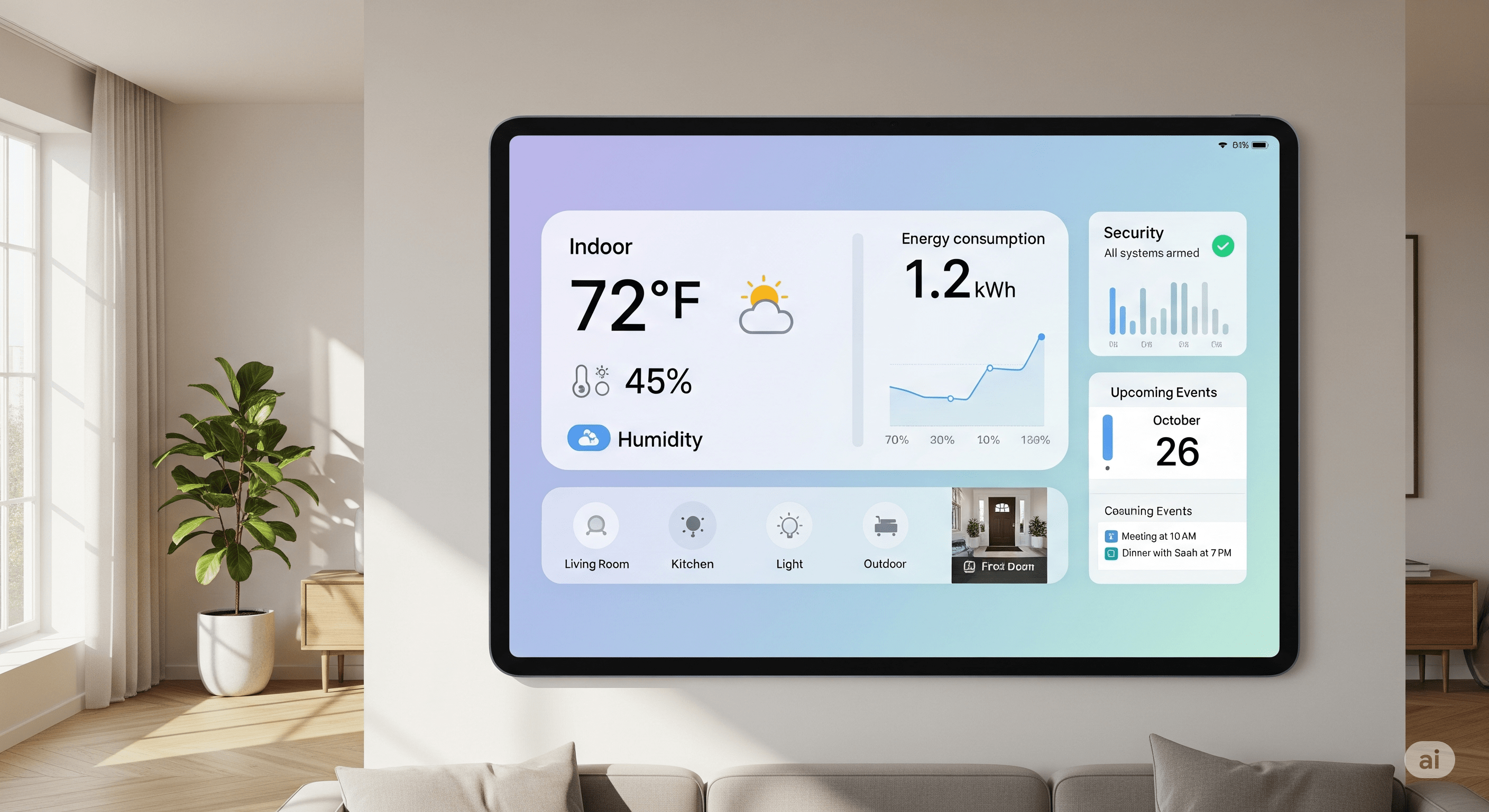Case Study: Smart Home Automation
May 12, 2024
The modern smart home is often a collection of devices from different manufacturers, each with its own app. This can lead to a fragmented and clunky user experience. An MQTT broker, combined with platforms like Home Assistant or Node-RED, can act as a central hub, and ioCtrlMQ can provide the unified user interface to control it all.
The Challenge
A homeowner wants a single, customizable dashboard to monitor and control various aspects of their home:
- View the status of and control lights in different rooms.
- Adjust the thermostat's setpoint.
- See the current temperature and humidity in the living room.
- View a live feed from a security camera at the front door.
The ioCtrlMQ Solution
All the smart home devices are integrated to communicate with a central MQTT broker.
-
Lighting Control:
- A Multi-LED Panel widget shows the on/off status of lights in the Living Room, Kitchen, and Bedroom. Each LED subscribes to a status topic (e.g.,
home/living_room/light/status). - A corresponding Multi-Button Panel allows the user to toggle each of these lights by publishing "ON" or "OFF" to a command topic (e.g.,
home/living_room/light/set).
- A Multi-LED Panel widget shows the on/off status of lights in the Living Room, Kitchen, and Bedroom. Each LED subscribes to a status topic (e.g.,
-
Climate Control:
- A Dial Bar (Gauge) widget displays the current temperature from a sensor in the living room (
home/living_room/temperature). - A Slider widget allows the user to set the thermostat's target temperature. It publishes its value to
home/thermostat/setpoint/set. A Text Display widget next to it shows the current setpoint by subscribing tohome/thermostat/setpoint/status.
- A Dial Bar (Gauge) widget displays the current temperature from a sensor in the living room (
-
Security Monitoring:
- A Camera Widget is configured with the stream URL for the front door security camera, providing a live video feed directly on the dashboard.

Outcome
Instead of juggling multiple apps, the homeowner now has a single, clean interface that provides a complete overview and control of their smart home. The dashboard is fully customized to their needs, placing the most frequently used controls front and center. This unified approach makes the smart home truly smart and convenient to use.